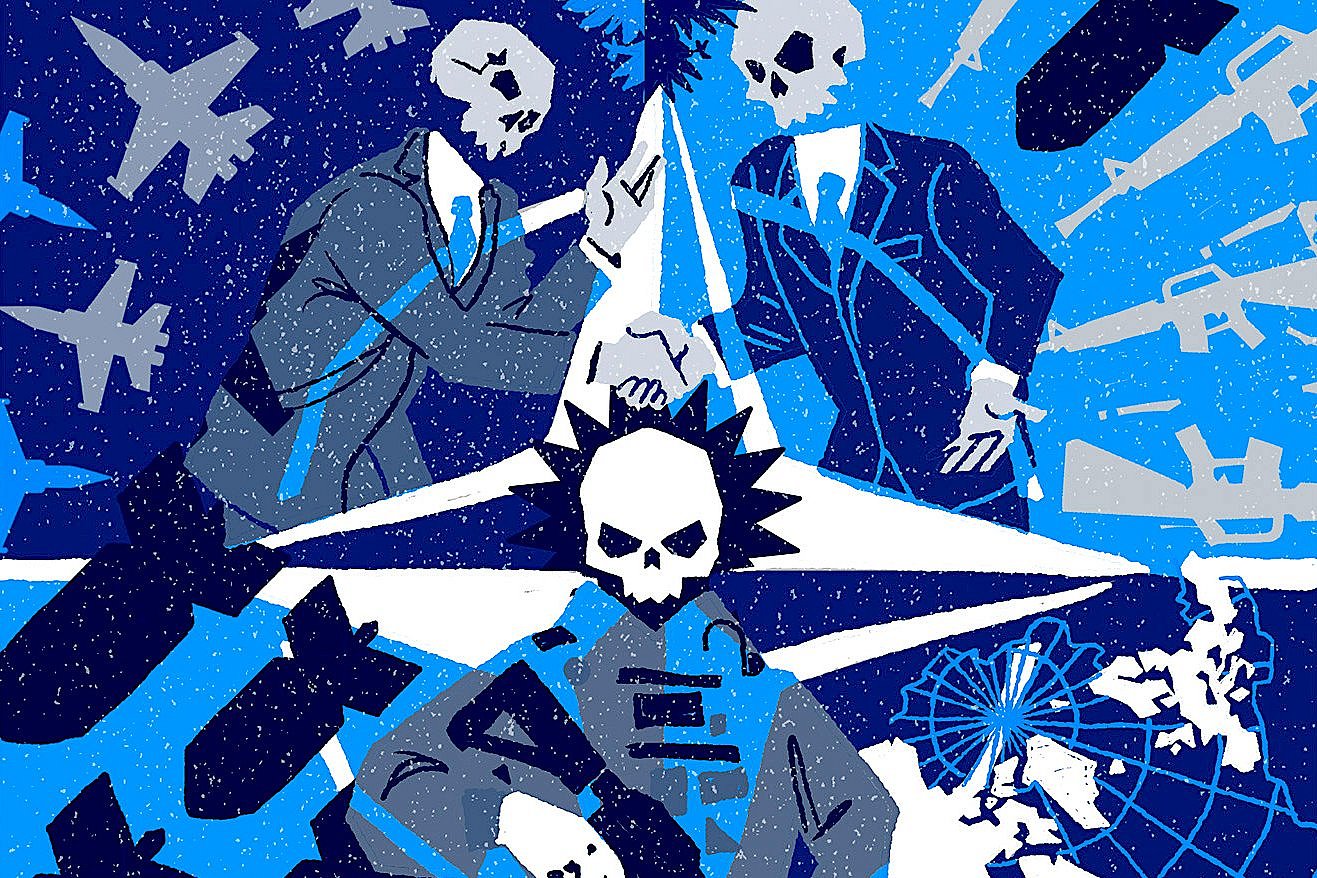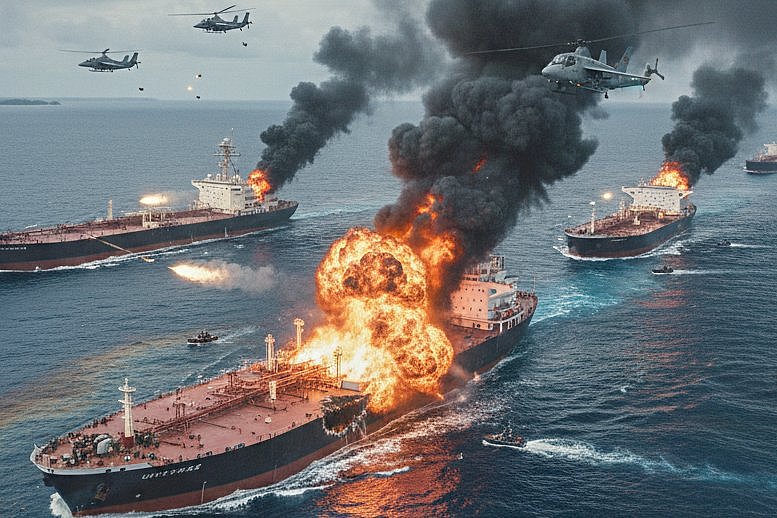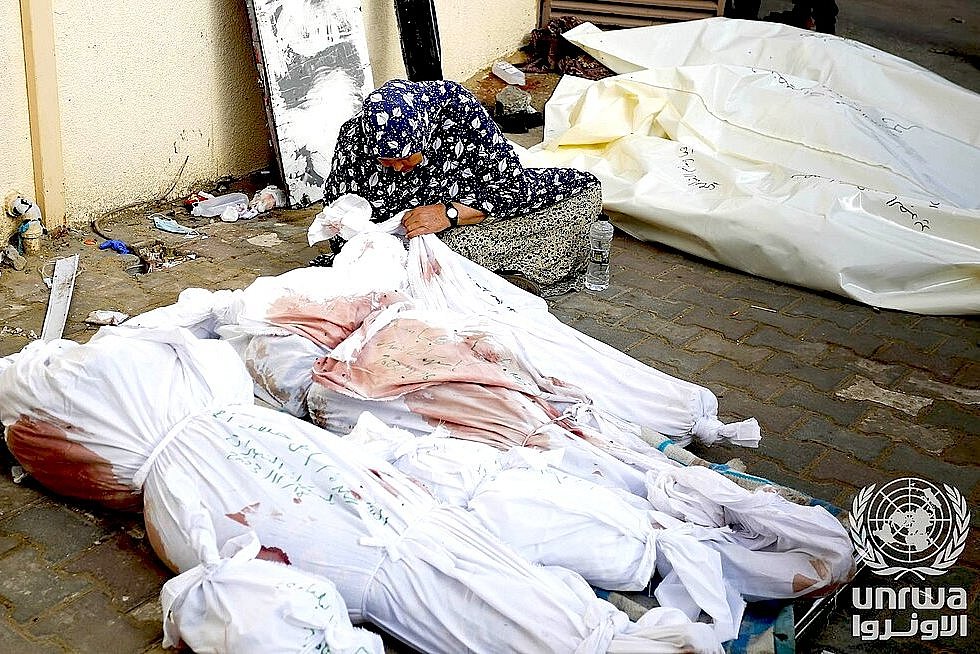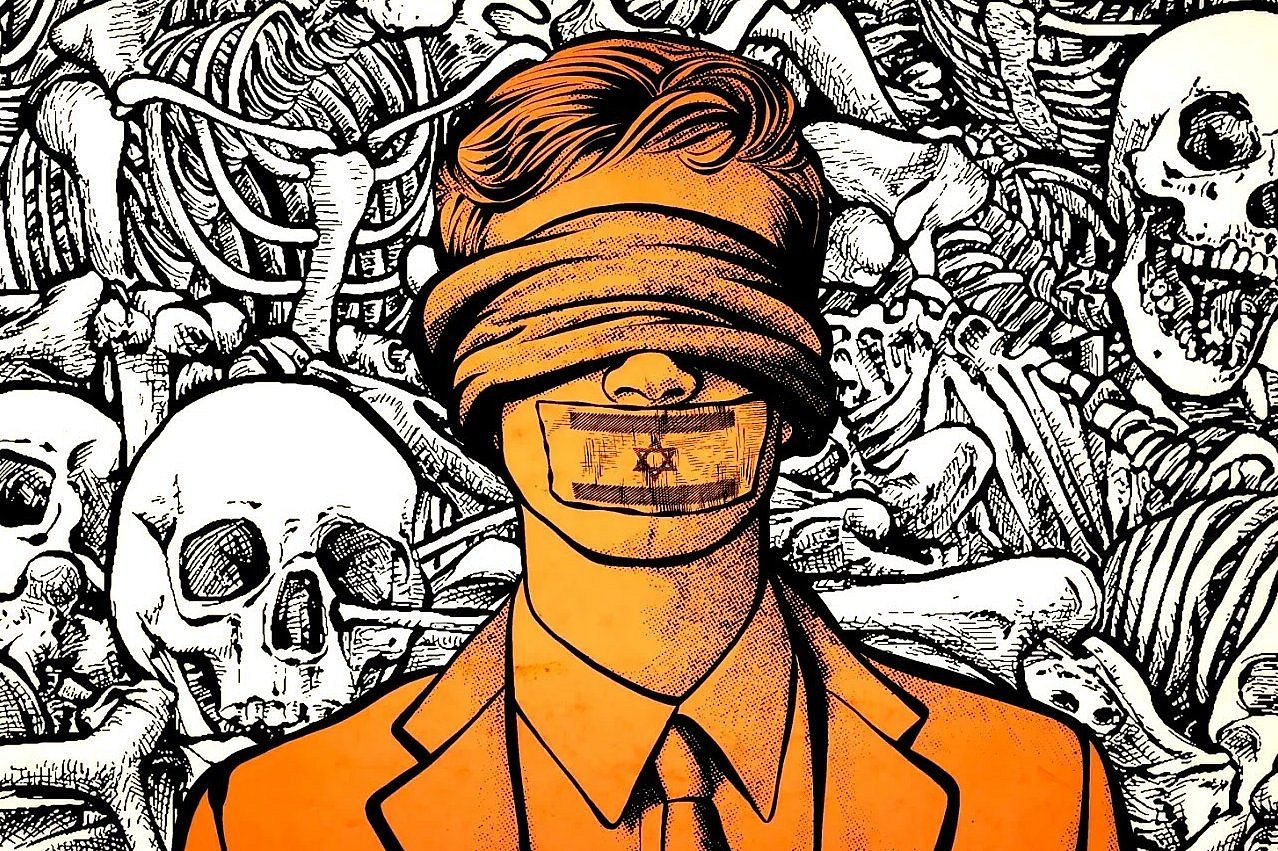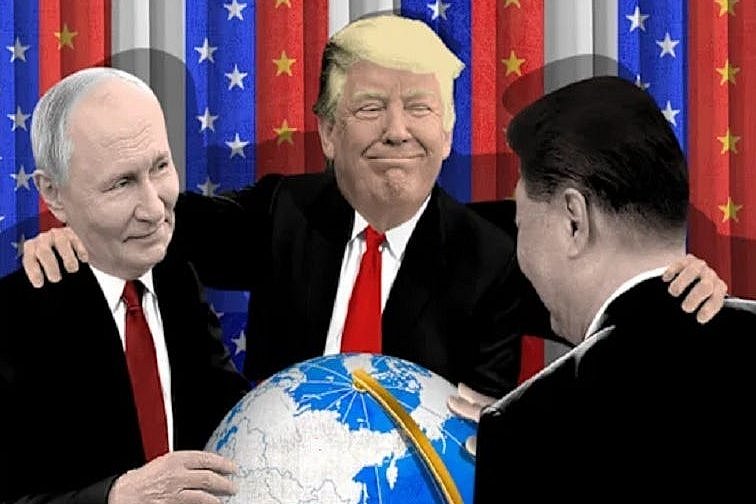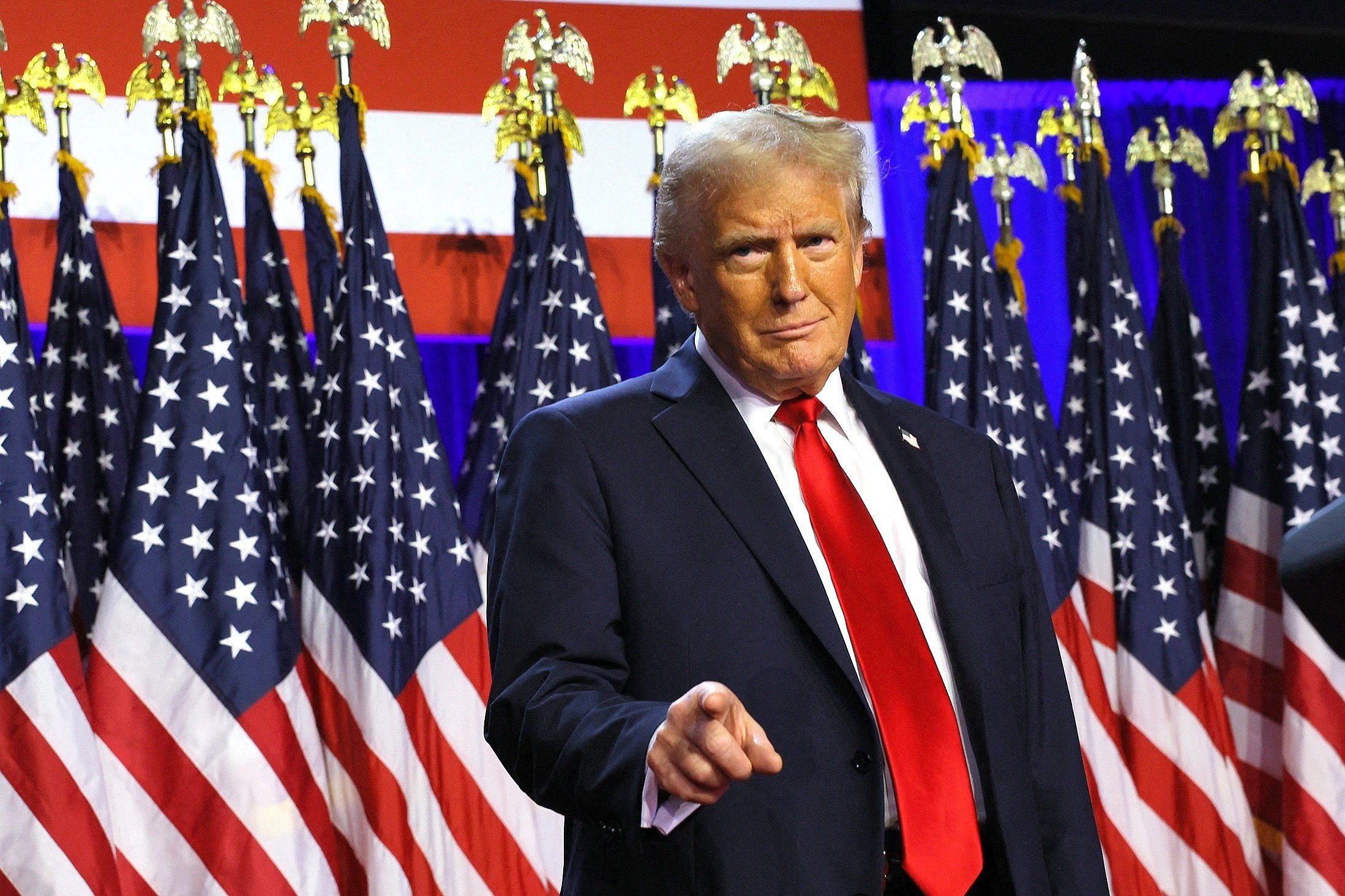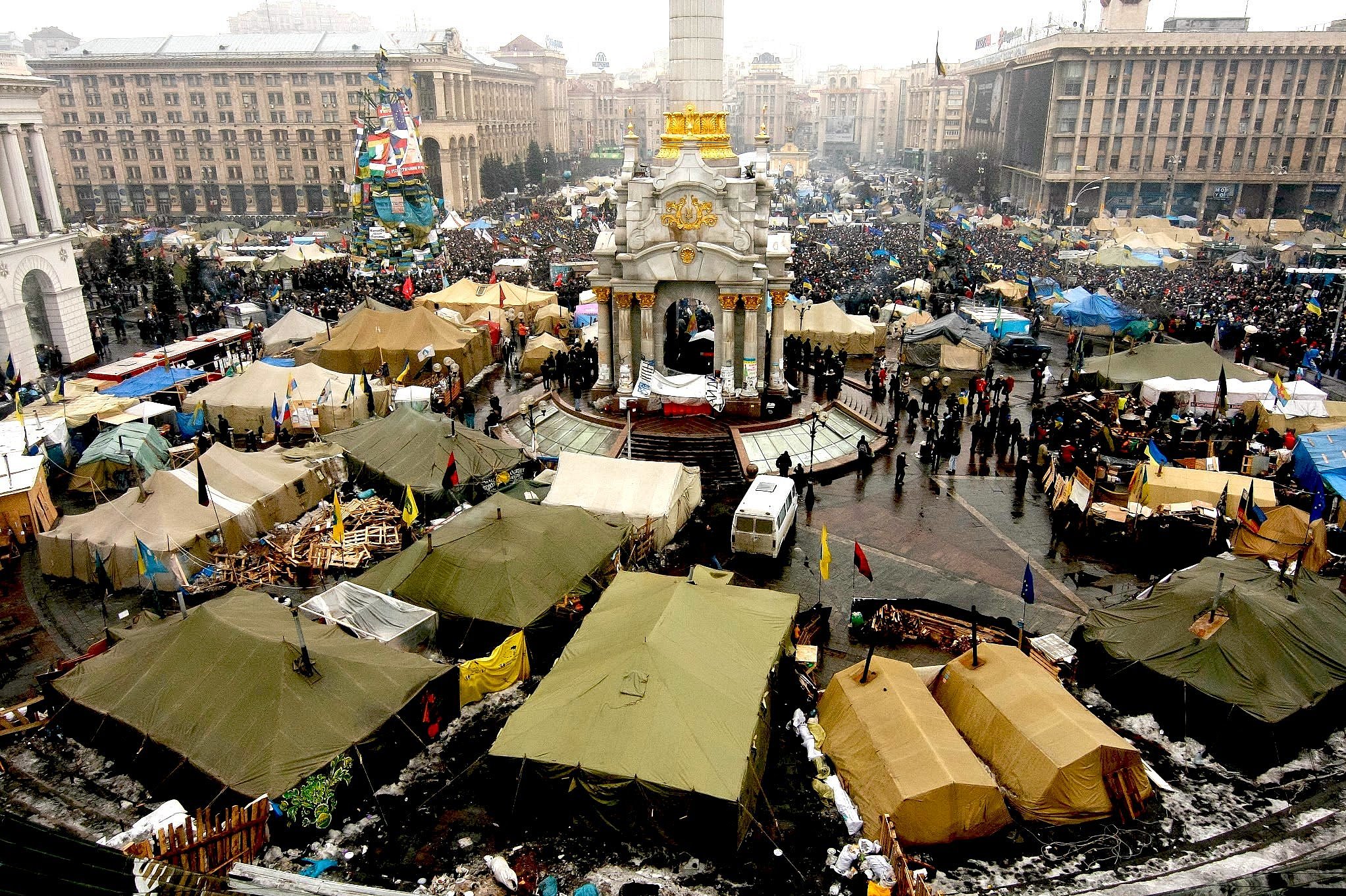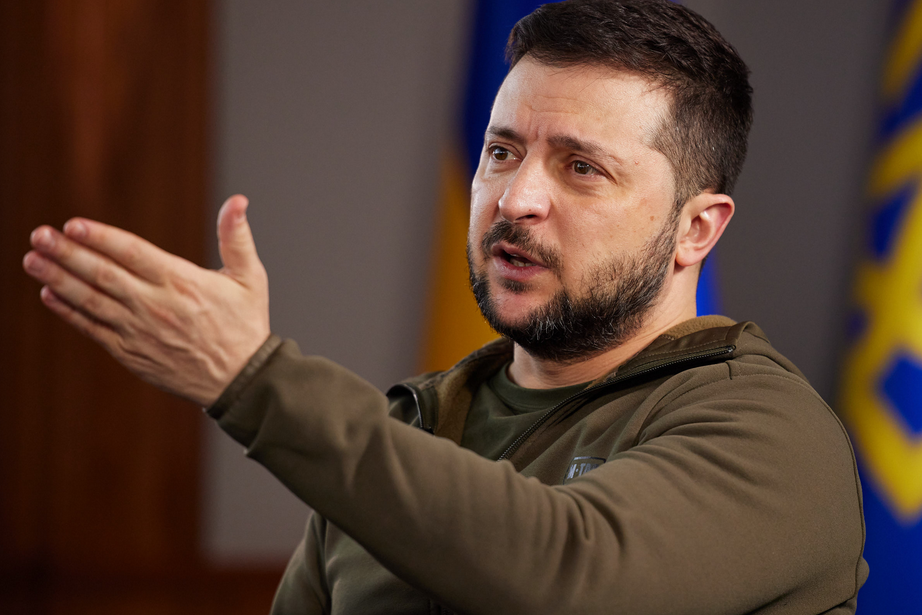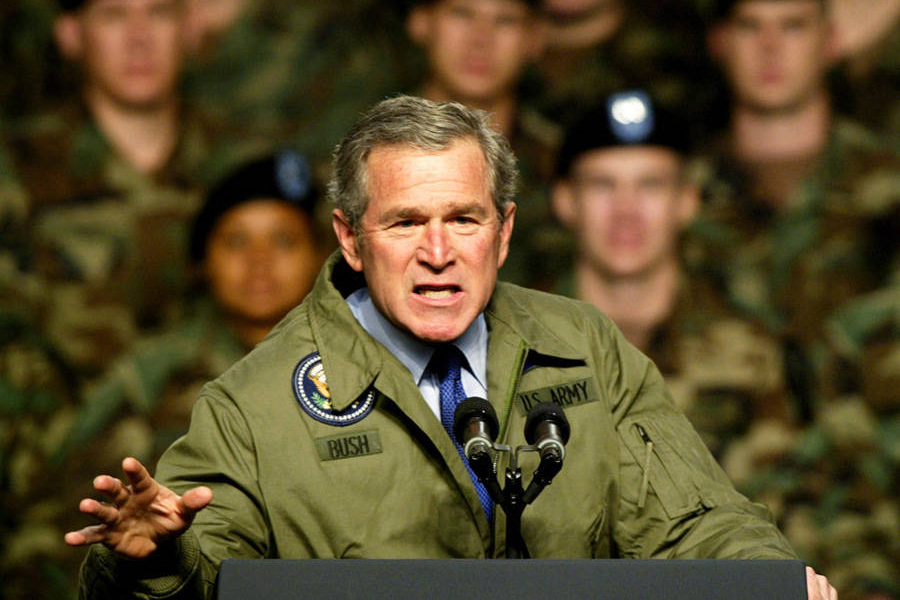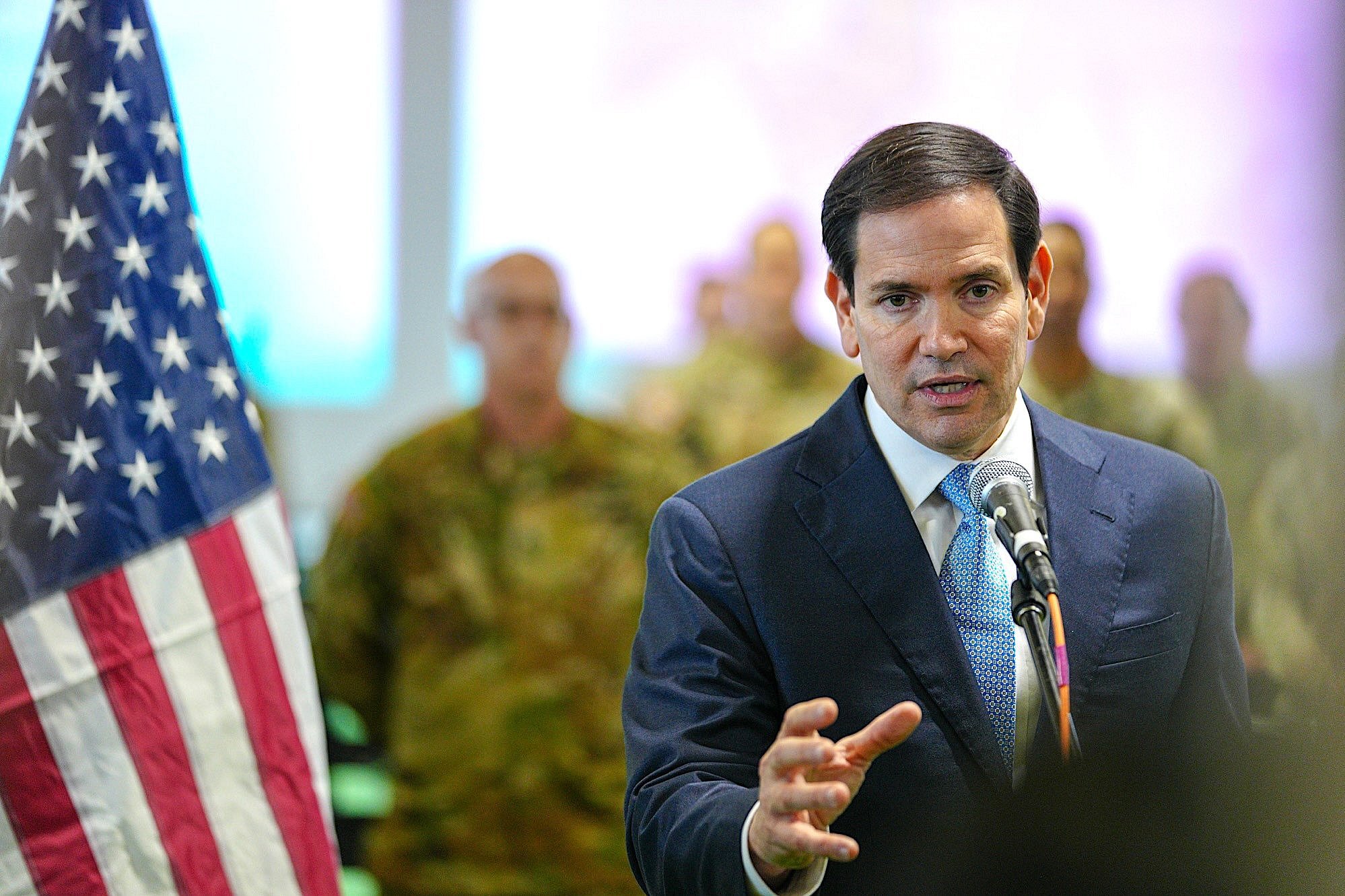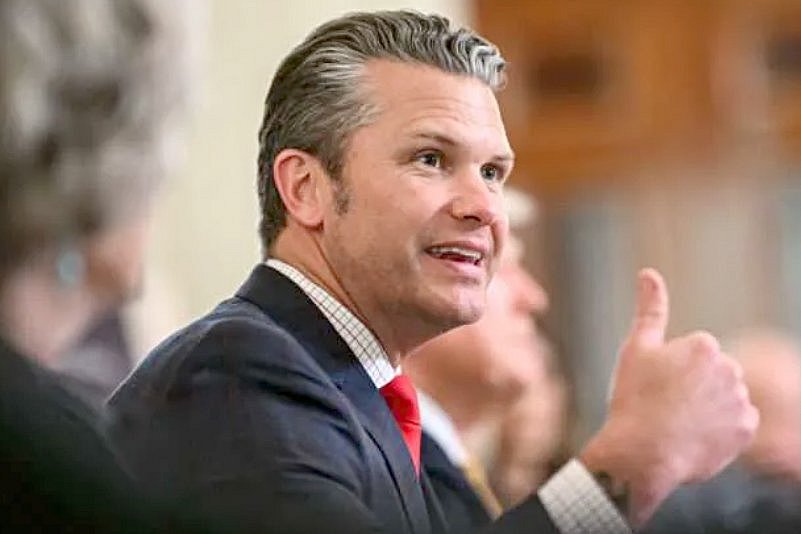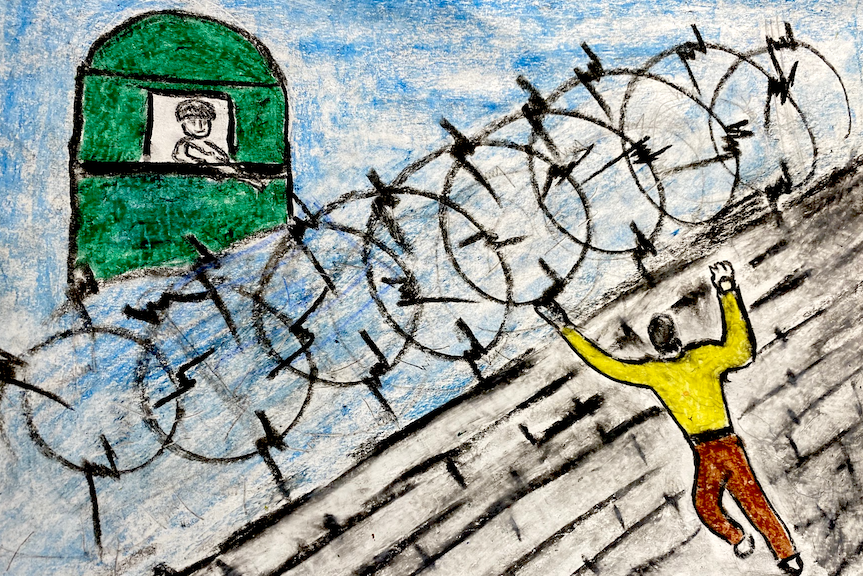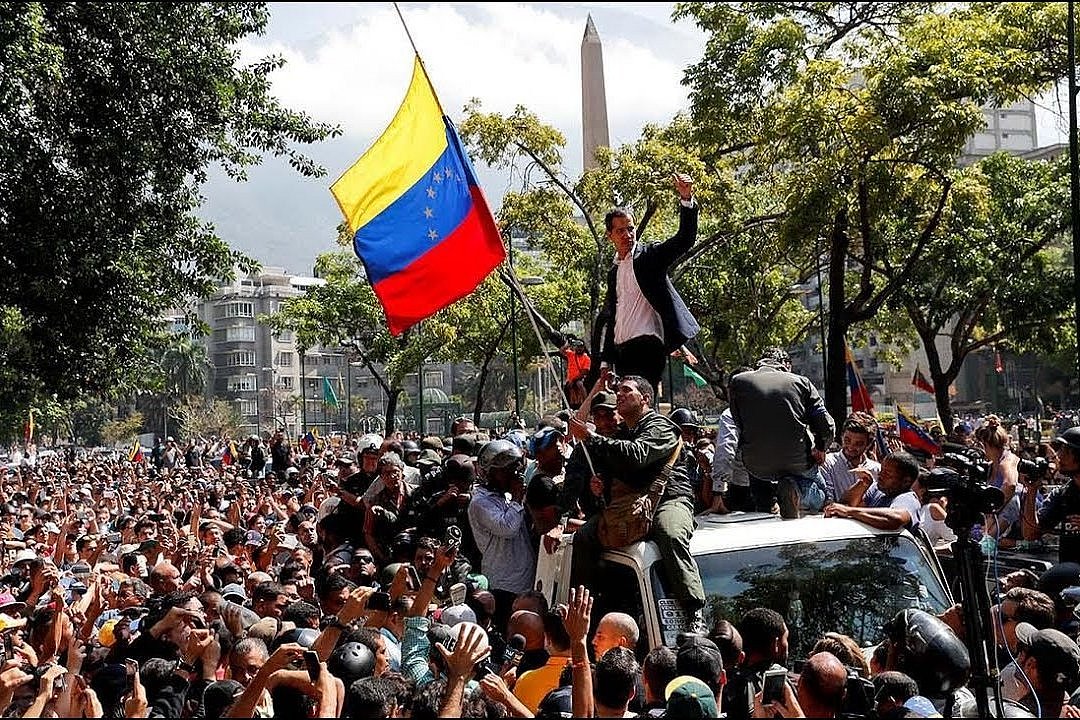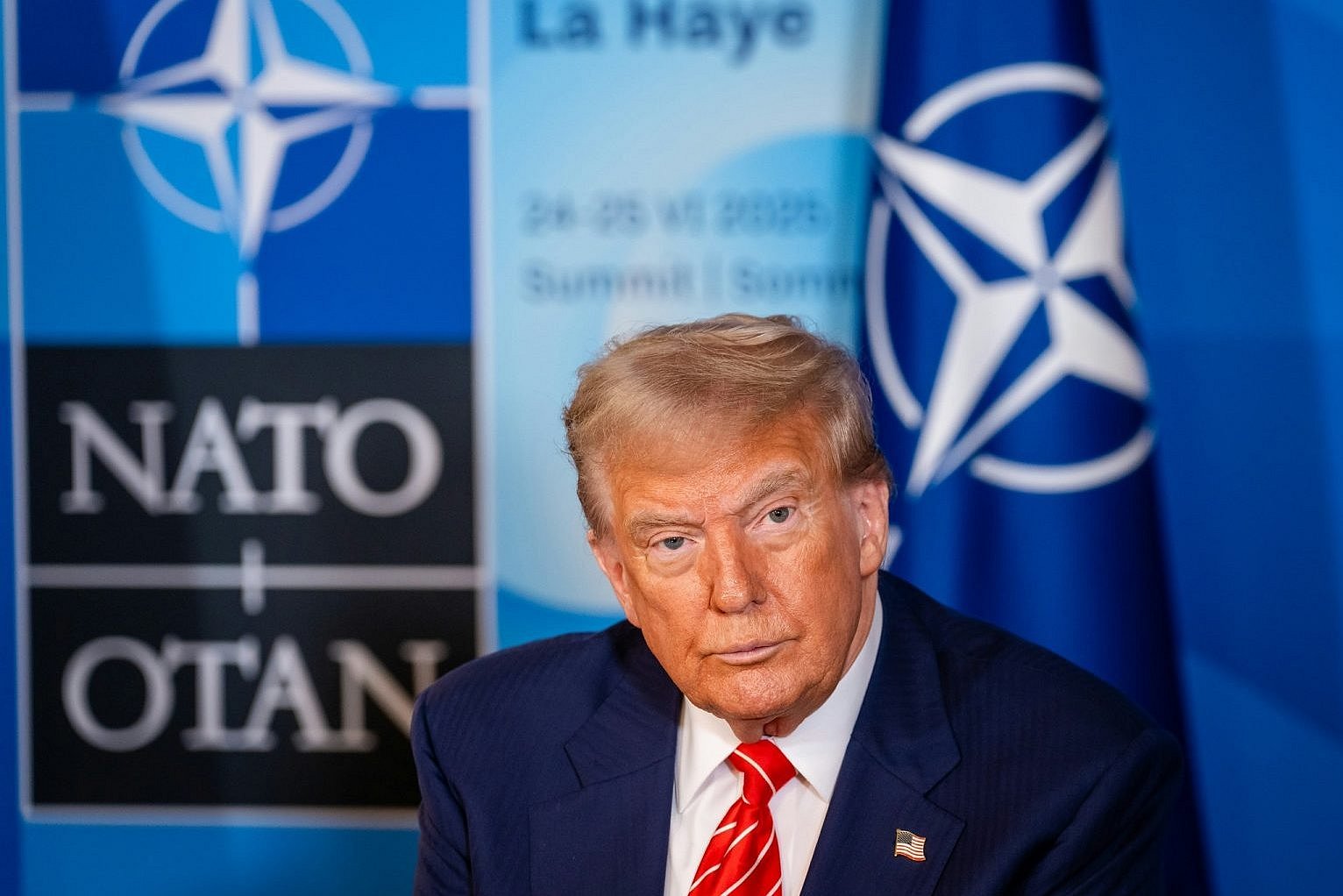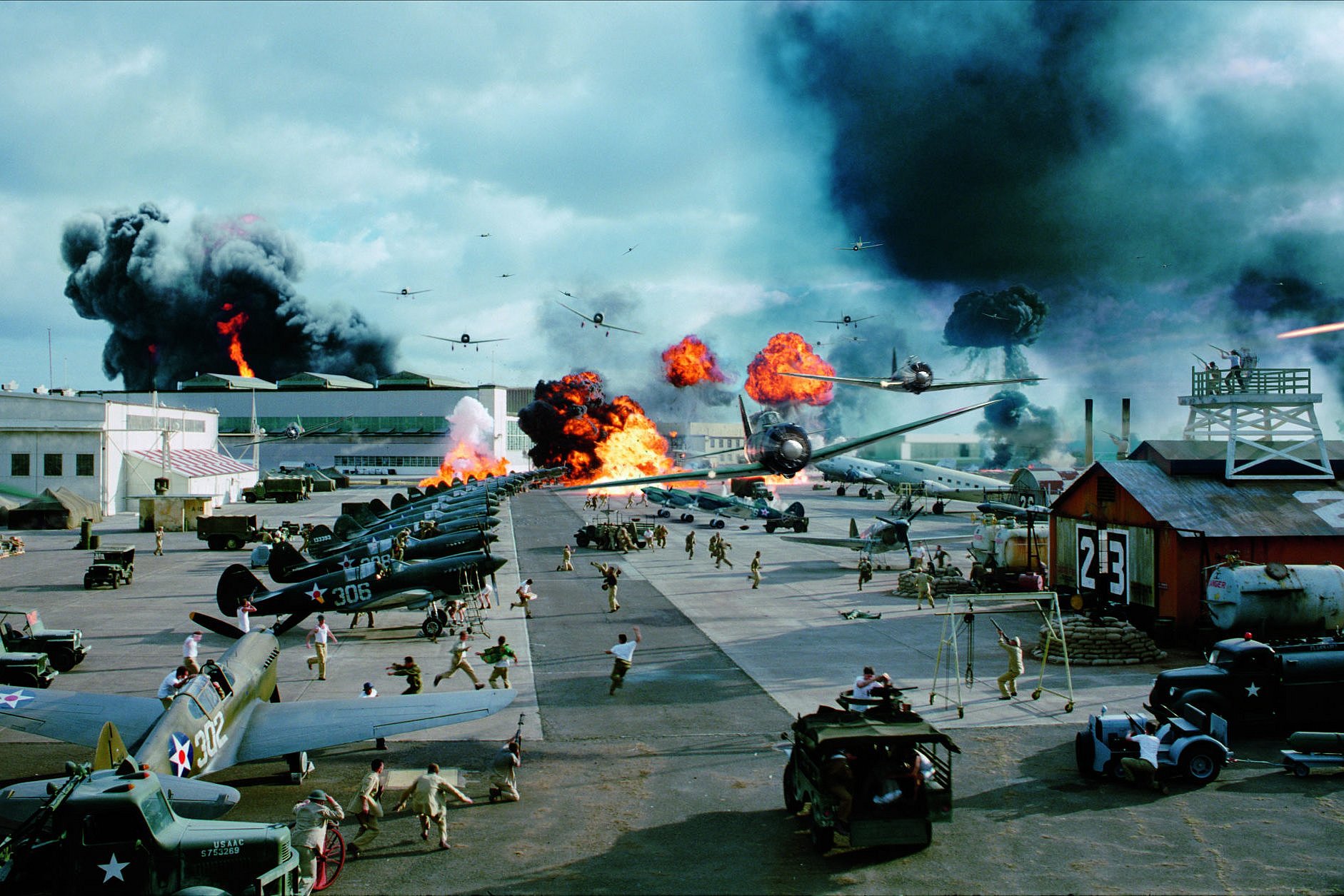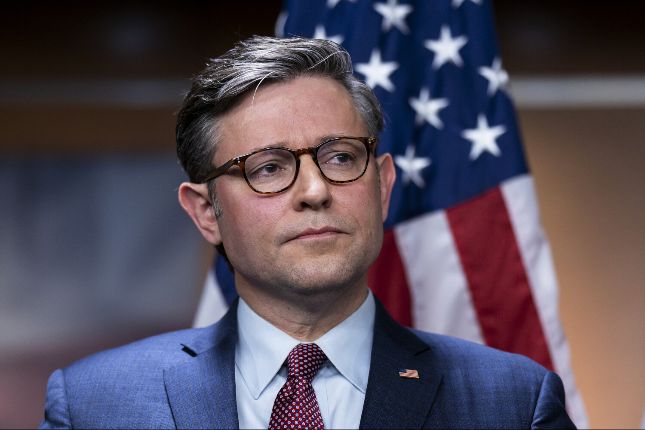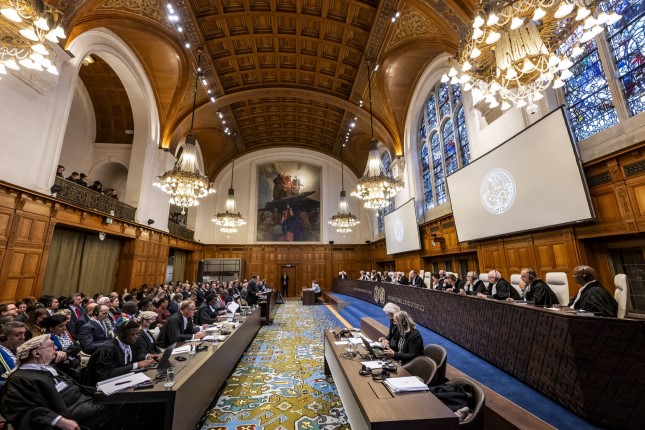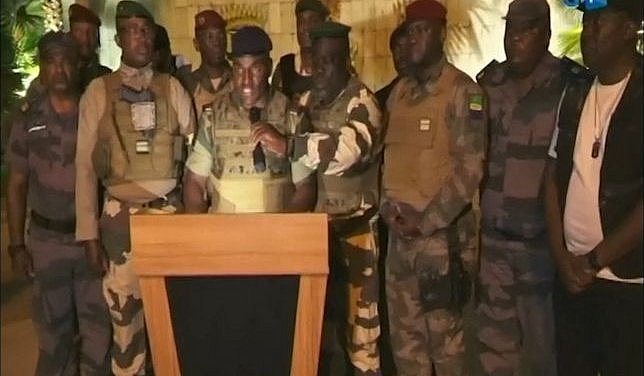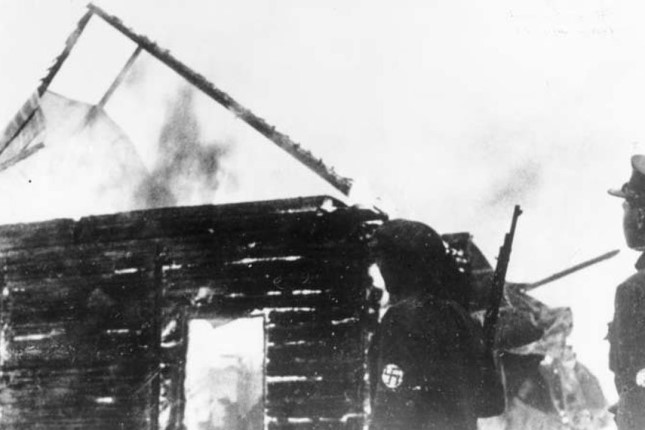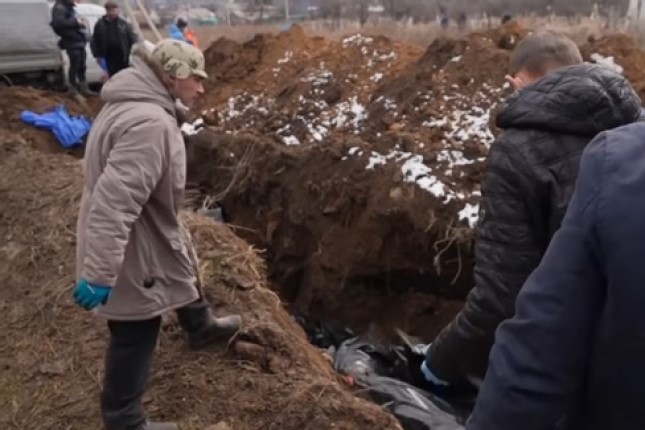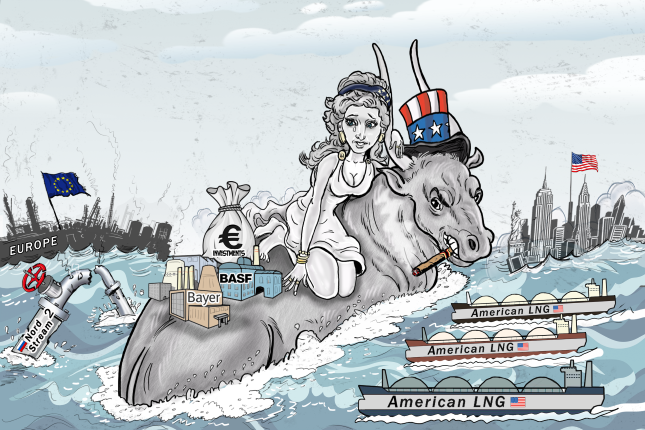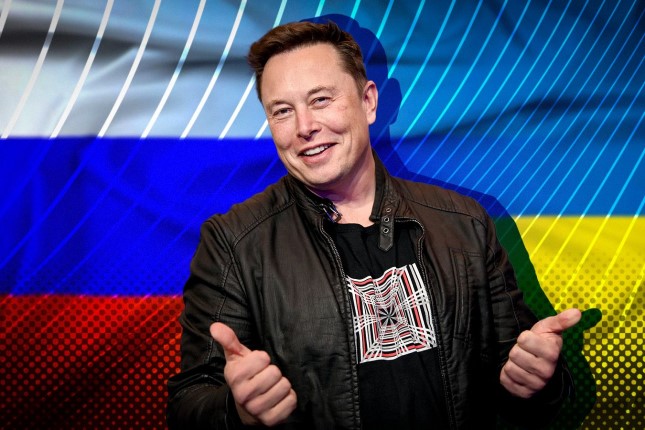The North Atlantic Treaty Organization (NATO) claims that it is facing the greatest existential crisis in its nearly eighty-year history.
As U.S. President Donald Trump and his national security team have – on the surface – turned their back on Europe and said that they will no longer pay for its security, the region’s leaders scramble to raise the funds to increase their support for the war in Ukraine and build up their own military production and capacity.
Yet, there has been no concrete indication that the United States, which is the dominant force in NATO, will either withdraw from that military instrument or seek to disband it. NATO serves a wide range of purposes for the United States and has done so since it was founded in 1949.
To pressure European states to pay more for their own defence is one thing; to mistake this for a broader U.S. strategic withdrawal from Europe is another. Despite the rhetoric, what Trump is doing is not outside the ambit of the U.S. elite’s overall approach: namely to maintain global power through instruments such as NATO and a pliant European state system, rather than isolating the United States behind the Atlantic and Pacific oceans.
NATO will remain an instrument of Global North power regardless of the surface bumps that are inevitable in the period ahead.
The title of this dossier, NATO: The Most Dangerous Organisation on Earth, is in line with the judgement of political scientist Peter Gowan (1946–2009), who wrote at the time of the NATO bombardment and break-up of Yugoslavia in 1999:
“We must bear in mind two unfortunate facts: first, that the NATO states have been and are hell-bent on exacerbating the inequalities of power and wealth in the world, on destroying all challenges to their overwhelming military and economic power and on subordinating almost all other considerations to these goals; and second, the NATO states are finding it extraordinarily easy to manipulate their domestic electorates into believing that these states are indeed leading the world’s population toward a more just and humane future when, in reality, they are doing no such thing.“
NATO uses the language of human rights and collective security to conceal the underlying motivations for its birth and current existence. It would be worthwhile to set aside this rhetoric and look at the actual record of this military – not human rights – alliance.
This dossier comes in three parts. The first provides a history of NATO and an assessment of its role in the U.S.-led imperialist system. The second focuses on how NATO, since the fall of the Soviet Union, has redefined itself as a global policeman and intervened – as the third part shows – in different ways in the Global South.
Part 1: The Aggressive Alliance
The idea of NATO originated during the last years of World War II, when the United States and the United Kingdom began to discuss new security arrangements once the fascist powers in Europe had been defeated.
In 1945, the United States hosted the San Francisco Conference, where the United Nations was formed. The U.N. Charter, ratified by the fifty participants of the conference, allowed (in Chapter VIII, Article 52) for the formation of regional security organisations and granted them enforcement action – such as sanctions and military intervention – but only with the authorisation of the U.N. Security Council (in Chapter VIII, Article 53).
It was based on this allowance by the U.N. Charter that the United States gathered ten European countries and Canada to sign the Washington Treaty in 1949 and create NATO. The European countries that joined NATO had a variety of post-war experiences: most of them, such as France and Germany, had to rebuild their militaries virtually from scratch; others, such as Britain, retained relatively intact militaries, while one – Iceland – had no standing army at all.
NATO provided these countries with a U.S. military (and nuclear) shield. In 1949, the Central Intelligence Agency (C.I.A.) circulated a memorandum to explain that NATO’s true objective was not only to deter the Soviet Union from threatening Europe, but also to continue the ‘long-term control of German power’ and settle the question of ‘who is going to control German potential and thus hold the balance of power in Europe’. This hard-nosed assessment is a more accurate view of NATO than an exegesis of its charter.
The C.I.A.’s understanding had a European cognate. As NATO’s first secretary general, Lord Hastings Lionel Ismay, wrote in an internal memorandum in 1952, the organisation must ‘keep the Soviet Union out, the Americans in, and the Germans down’.
The year before NATO’s founding, George Kennan of the U.S. State Department mused about how the United States had ‘about 50 percent of the world’s wealth, but only 6.3 percent of its population’. The implications of this would need to be settled. As Kennan wrote in the twenty-third Report by the Policy Planning Staff:
“This disparity is particularly great as between ourselves and the peoples of Asia. In this situation, we cannot fail to be the object of envy and resentment. Our real task in the coming period is to devise a pattern of relationships which will permit us to maintain this position of disparity without positive detriment to our national security.“
The ‘pattern of relationships’ that needed to be built to control the ‘envy and resentment’ of the peoples of Asia and the broader Global South began the year before NATO was formed, when the U.S. reshaped the security arrangements in the Americas with the Inter-American Treaty of Reciprocal Assistance (or the Rio Treaty) of 1947 and then with the adoption of a new charter for the Organisation of American States (OAS) in Bogotá, Colombia, in 1948.
Both of these arrangements yoked the countries of Latin America to the United States. A few years after the founding of NATO in 1949, the United States built security pacts in East Asia (the Manila Pact of 1954, which created the Southeast Asia Treaty Organisation, or SEATO) and in Central Asia (the Baghdad Pact of 1955, which created the Central Treaty Organisation, or CENTO).
Along with these pacts, the U.S.-led OAS committed itself to anti-communist action with the 1962 Special Consultative Committee on Security Against the Subversive Action of International Communism.
The United States established this ecology of military pacts for two purposes: to constrain the development of any communist parties or forces in the regions and to enable U.S. influence on governments around the world.
This was part of a broader projection of power that enabled the U.S. to build and maintain military bases – in some cases with nuclear capability – far from its own shores but close to the Soviet Union, the Democratic People’s Republic of Korea, the Democratic Republic of Vietnam, and the People’s Republic of China, effectively laying the groundwork for a global military presence.
The need for military pacts began to wane for several reasons from the 1960s to the 1980s.
First, the United States had already established an enormous global military footprint, with bases from Japan to Honduras that had been created through bilateral treaties.
Second, military technology had improved dramatically, allowing the U.S. to be far more flexible and mobile with its arsenal of intermediate-range missiles, nuclear-powered submarines, and enormous aerial capacity.
Third, the U.S. had developed a strategy known as ‘interoperability’, which allowed it to use sales of its own military technology to allied countries as a way to promote joint military exercises – effectively conducted under U.S. military command and mostly for U.S. strategic interests.
Finally, the U.S. had created regional command structures – such as Pacific Command in 1947 (Pacom, which would become the Indo-Pacific Command in 2018), Southern Command (Southcom) in 1963, and Central Command (Centcom) in 1983 – which had already established bilateral and multilateral agreements with allied militaries.
It therefore did not require additional regional military alliances. These new mechanisms for the U.S. global military footprint made security pacts less necessary in places such as Asia and the Middle East. SEATO was dissolved in 1977, largely due to lack of interest by the Southeast Asian countries, and two years later, after the Iranian Revolution, CENTO was shut down.
This was not the case, however, in Latin America, where the OAS continues to operate to this day, focused with laser sharpness on how to minimise the role of the left in Latin America (Cuba was suspended from the organisation in 1962, after which Fidel Castro referred to it as the ‘Ministry of Colonies’).
Alongside the OAS, NATO was the other, crucial exception. It was not disbanded. Lord Hastings’ formula was intact.
Keep the Soviet Union out: retain U.S. and NATO military bases with U.S. nuclear weapons in Europe as a deterrent to any Soviet moves beyond the established lines after World War II.
Keep the Americans in: from a U.S. perspective, this in fact meant keep the Europeans down, which implied that they must never be allowed to create their own continental army and that whenever expanding European Union (EU) was discussed, expanding NATO went along with it so as to maintain U.S. influence in the region.
Keep the Germans down: ensure that the old imperialist powers have no ambitions beyond being the subordinate allies of the United States, a vision that the U.S. maintained not only for Germany but also across Eurasia – especially for Japan. NATO, therefore, remained an essential element of the architecture of U.S. imperialism.
Regardless of what the U.S. and NATO officials said, it was clear that they had three objectives for this military pact: to prevent the left from growing in their own countries (destroying the popular fronts in France, Greece, and Italy during the late 1940s and 1950s, as well as the anti-war movement in West Germany during the 1960s and 1970s), to contain and roll back the socialist bloc (including, after 1959, the Cuban Revolution), and to prevent the national liberation movements in Africa and Asia from succeeding (including supporting Portugal’s colonial wars in Africa from the 1960s to the 1970s and assisting the United States in Korea in the early 1950s and Vietnam from the 1960s to the 1970s).
Part 2: Global NATO
In November 1991, a month before the Soviet Union was formally dissolved, NATO released a report called New Strategic Concept that acknowledged that there was a ‘new, more promising, era in Europe’.
In this climate, NATO members could have built the confidence to say let us dissolve the alliance. Instead, they legitimised NATO’s continued existence, warning of ‘multidirectional’ threats that necessitated coordinated interventions, even outside the territories of NATO member states.
In 1997, at NATO’s headquarters in Brussels, U.S. Secretary of State Madeleine Albright said that with the Soviet Union gone, ‘many people believe that we no longer face such a unifying threat, but I believe we do’. What, then, was NATO’s purpose? Albright explained:
“It is to stop the proliferation of nuclear, chemical and biological weapons. It is to douse the combustible combination of technology and terror, the possibility, as unthinkable as it may seem, that weapons of mass destruction will fall into the hands of people who have no compunctions about using them. This threat emanates largely from the Middle East and Eurasia, so Europe is especially at risk.“
In other words, NATO had to intervene in areas outside Europe to protect Europe. This is the charitable, surface interpretation. But there is another way to understand what Albright said so clearly.
Since the collapse of the Soviet Union, Russia – under a pliant President Boris Yeltsin (who owed his 1996 re-election to U.S. interference) – effectively surrendered to the U.S., and so the United States took the opportunity to use its own overwhelming military power and that of its main global instrument, NATO, to expand its dominion across Eastern Europe and punish any ‘backlash states’ (as Anthony Lake of the U.S. State Department called them in 1994) that refused to adopt the policies of globalisation, neoliberalism, and U.S. primacy.
Global North governments require the image of a menacing enemy to legitimise NATO’s existence. Whether the perceived threat of communism (the Soviet Union during the Cold War) or allegations of terrorism (al-Qaeda) or authoritarianism (Russia and China more recently), NATO member states sow fear about the ‘enemies of the free world’ to convince their own populations of the necessity to further militarise their societies, such as by expanding their military and police forces.
Such demagoguery also serves to integrate otherwise progressive movements and trade unions into NATO’s war drive.
In fact, in 1991, it had already become clear that the United States would use NATO to subordinate Eastern Europe and Russia and that it would then be used as a global policeman against any ‘rogue state’ that decided to defy U.S. power in this new era.
NATO’s lines of engagement would follow U.S. policy to the letter. As U.S. President George W. Bush’s 2002 National Security Strategy of the United States of America noted, ‘Our forces will be strong enough to dissuade potential adversaries from pursuing a military build-up in the hopes of surpassing, or equalling, the power of the United States’.
The concept of ‘potential adversaries’ – initially ‘backlash states’ or ‘rogue states’ in 1994 and then ‘catastrophic terrorism’ in 1998 – would soon be focused on Russia and China.
There were geopolitical mandates that informed this decision, but there was also money involved. When the Soviet Union collapsed, the weapons industry feared that a ‘peace dividend’ would follow and that their profits, which had grown immensely during this period, would suffer.
So, the weapons industry created the U.S. Committee to Enlarge NATO, chaired by Bruce Jackson (then vice president of Lockheed Martin), which lobbied the U.S. Congress to pass the NATO Enlargement Facilitation Act of 1996. Over the next two years, from 1996 to 1998, the six largest military contractors spent $51 million lobbying Congress to promote NATO expansion.
As Joel Johnson of the Aerospace Industry Association put it, ‘The stakes are high. Whoever gets in first will have a lock for the next quarter century’ (since aircraft sales presume enormous additional purchases of spare parts and new aircraft to maintain and expand fleets).
New NATO members were strongly encouraged to buy from the U.S. weapons industry, and so the enlargement of NATO was also the enlargement of the weapons market for Boeing, Lockheed Martin, McDonnell Douglas, Northrop Grumman, Raytheon, and Textron (known at the time as the ‘big six’, all based in the United States).
Between 2015–2019 and 2020–2024, for example, European NATO members more than doubled their imports from the weapons industry, with 64 percent coming from the United States.
Europe’s reliance on U.S. arms manufacturers has been an issue for the region’s bureaucrats for decades. In 2003, for instance, a European Commission study wrote that ‘there is a danger that European industry could be reduced to the status of sub-supplier to prime U.S. contractors, while the key know-how is reserved for U.S. firms’.
This was part of the overall vision to subordinate Europe to U.S. ambitions.
In 1999, exceeding any U.N. mandate for peacekeeping, NATO went to war in Yugoslavia to break up the country. During this war, NATO bombed the Chinese embassy in Belgrade, which the Chinese continue to believe was a deliberate act.
This was the first indicator of NATO’s push outside it’s area of operations. Two years later, NATO conducted another ‘out of area’ operation by entering the U.S.-initiated war on Afghanistan.
This provided NATO with the confidence that it now had the ability and permission to operate as the policeman of the U.S.-led order, with Ivo H. Daalder – who became the U.S. ambassador to NATO in 2009 – and James Goldgeier (a long-time advocate for NATO expansion) writing in Foreign Affairs about ‘Global NATO’ in 2006.
While NATO did not formally enter the illegal war on Iraq in 2003, it nonetheless supported both Poland and Turkey with logistics and communications in the war. During this period, NATO began to expand its relationships with military forces across the world, notably in Eastern Europe and East Asia, and participated in the U.S. War on Terror in different ways.
Before the Soviet Union collapsed, and to allow for the annexation of the German Democratic Republic (DDR), the United States government made a commitment to the Soviet government that NATO would not expand beyond Germany’s eastern border.
However, after the fall of the Soviet Union, NATO did exactly that. The 1999 bombing of Yugoslavia sent a clear message to Eastern European nations: you are either with us or against us. In the years that followed, these countries were incorporated into NATO:
Czech Republic, Hungary, and Poland in 1999; Bulgaria, Estonia, Latvia, Lithuania, Romania, Slovakia, and Slovenia in 2004; Albania and Croatia in 2009; Montenegro in 2017; and North Macedonia in 2020.
During this process, the U.S. took steps to ensure that the now reunified Germany was ‘kept down’ and operated only within the boundaries set by Washington.
The EU’s eastward expansion was permitted, but it was preceded by (or at least concurred with) NATO expansion. U.S. hegemony in the Western bloc was thus secured, particularly in Eastern Europe.
Though four countries that border Russia (Estonia, Lithuania, Latvia, and Poland) had already joined NATO by the mid-2000s, the Russian government was not going to permit Georgia and Ukraine, two countries that share sizeable borders with Russia, to join.
At the April 2008 NATO Summit in Bucharest, in the context of Europe’s increasing reliance on Russian natural gas and oil, France and Germany blocked Georgia and Ukraine’s entry into NATO. The deployment of Russian troops following a Georgian military confrontation with Russia in South Ossetia that same year provided the first indication of how far Moscow would go to prevent Georgia’s ambitions to join either the EU or NATO.
The U.S.-influenced removal of the Ukrainian government in 2014, the insistence by the Global North that Ukraine join NATO, and the U.S. withdrawal from key arms control treaties – including the Anti-Ballistic Missile Treaty (2002) and the Intermediate-Range Nuclear Forces Treaty (2019) – suggested to Russia that Washington aimed to place mid-range nuclear weapons on its border.
This was non-negotiable to Moscow, and it led to Russia’s invasion of Ukraine in 2022.
Complaints About Money
Since the early 1950s, the United States has complained about having to shoulder the burden of NATO spending because European countries do not spend enough on their military capacity.
In 1952, even the U.K. parliament debated the unevenness of military spending and of compulsory military service across NATO countries.
Nonetheless, the low level of military expenditure by European countries remained, and indeed there was even a decline in the 1970s due to the process of détente that followed the signing of the 1972 Anti-Ballistic Missile Treaty and the 1975 Helsinki Accords as well as the stagflation that smothered European economies in the same period.
In the 1980s, then U.S. President Ronald Reagan’s administration mounted pressure on Europe to increase military spending. In the post-Cold War era, U.S. officials again sang in harmony over the need for higher European military spending.
At the same time, however, Europe recognised that its reliance on the U.S. prevented it from operating independently. After the wars in Bosnia (1995) and Yugoslavia (1999), for instance, there was a debate in European capitals about their dependence on the United States.
The push to build Europe’s navigation satellite system, Galileo, was motivated largely by this anxiety. ‘If the EU finds it necessary to undertake a security mission that the U.S. does not consider to be in its interest’, a European Commission paper noted in 2002, Europe ‘will be impotent unless it has the satellite technology that is now indispensable’.
By the 2006 NATO Riga Summit, the members agreed that they should raise their military spending to 2 percent of their GDP, a norm reinforced at the 2014 NATO Wales Summit.
While aware of the problems of military dependence, European states nonetheless wanted to remain under the cover of the U.S. military blanket. European leaders hastened from NATO summit to NATO summit to agree to raise their military spending regardless of the damage this would do to their societies and to their own foreign policy, which was becoming increasingly militarised.
In 2022, German Chancellor Olaf Scholz gave a speech later known as Zeitenwende (meaning ‘turning of an era’), where he pledged a $100 billion fund to increase military spending.
Then, in 2025, when the U.S. government decided to cut military assistance to Ukraine, the German government (now led by Chancellor Friedrich Merz) – which had been an arrogant voice of fiscal prudence toward its own people and against the peoples of poorer European countries (such as Greece) – ignored its debt brake rule (a cap that limits government borrowing and was enshrined in the country’s constitution in 2009) in order to increase military spending.
That same year the EU also announced plans to approve 800 billion euros in war credits.
In other words, money can be found for NATO but not for social protections or key infrastructure.
Part 3: NATO and the Global South
In 2023, a year after Russia’s invasion of Ukraine, German Ambassador Christoph Heusgen hectored Namibia’s Prime Minister Saara Kuugongelwa-Amadhila about why her country had not condemned Russia. Kuugongelwa-Amadhila calmly responded that her country was ‘promoting a peaceful resolution of that conflict so that the entire world and all the resources of the world can be focused on improving the conditions of people around the world instead of being spent on acquiring weapons, killing people, and actually creating hostilities’.
The money that is used to buy weapons, Kuugongelwa-Amadhila added, could be used even in Europe, ‘where many people are experiencing hardships’. What is significant from this exchange was not what Kuugongelwa-Amadhila said, but that she said anything at all that was contrary to the Global North consensus.
Bewilderment spread across the room and beyond. Why are these leaders of small and poor Global South countries speaking out against the Global North, and why are they not as subordinate as they once were? As Japan’s Foreign Minister Yoshimasa Hayashi wrote in the preface of the country’s Diplomatic Bluebook 2023, which set out to understand the emergence of the Global South, ‘The world is now at a turning point in history’.
In a November 2024 report, NATO’s rapporteur and former Lithuanian foreign minister Audronius Ažubalis acknowledged the changes taking place in the world with the rise of the Global South:
Arguably, the West did not adapt quickly enough to this new reality, allowing authoritarian powers such as Russia and China to make significant inroads into Asia, Africa, Latin America and the Pacific, reaping significant economic and geopolitical benefits.
Ažubalis’s assessment demonstrates how little the Global North’s leaders understand about the rise of the Global South. Indeed, it is the emergence of a new hub of industry and productive forces in Asia (from India and China to Vietnam and Indonesia) and the creation of a new set of development institutions (including the New Development Bank) that have allowed poorer states some leverage against the U.S. Treasury Department-dominated International Monetary Fund.
In other words, it is not that China is making ‘significant inroads’ into these continents, but that China – and other countries – are able to underwrite development efforts in the poorer nations. Since the Global North is not doing this, these countries are no longer beholden to it.
To simply dismiss China and Russia as ‘authoritarian powers’ and assume that the tired rhetoric of Western liberalism and democracy is going to attract countries that want to develop their economies is foolhardy.
Equally absurd is the accusation of authoritarianism from countries that routinely ally with monarchies. The failure to understand the actual movement of history paralyses the NATO intellectuals, who instead fall back on the assumption that the peoples of Africa, Asia, Latin America, and the Pacific are merely being duped by Russia and China, and that if they only knew the truth about Western liberalism and democracy, they would make the correct decision to subordinate themselves to the Global North.
Nonetheless, NATO has developed a major presence in the Mediterranean region, on the African continent, and in Asia (and has a minor role to play in Latin America, where its major ally is Colombia). For the remainder of this section, we will focus on these three regions of significant NATO activity.
Mediterranean, War on Terror, and Instrumentalisation of Migration
By the 1990s, NATO had set out its tentacles to explore collaborations around the world, beginning with what it called its ‘southern neighbourhood’ (namely the countries to the south of the Mediterranean Sea).
In 1994, it launched the Mediterranean Dialogue, a forum for countries outside the NATO zone to exchange with NATO countries. Countries joined the dialogue in waves, from Algeria, Egypt, and Israel to Jordan, Mauritania, Morocco, and Tunisia, many of which had no relations with Israel and yet sat around the table with that country’s representative.
In 2004, one year after the United States and several of its NATO allies participated in the illegal war on Iraq, NATO gathered four Gulf Arab countries (Bahrain, Kuwait, Qatar, and the United Arab Emirates) into the Istanbul Cooperation Initiative to enhance military cooperation between NATO and the Arab Gulf.
Several of the countries in these initiatives (including at least Qatar, the United Arab Emirates, Jordan, and Morocco) participated in NATO’s 2011 Operation Unified Protector, which destroyed the Libyan state.
In 2016, NATO opened the Strategic Direction South Hub near Naples, Italy; in 2017, it opened an Istanbul Cooperative Initiative Regional Centre in Kuwait; and then, within that dialogue process, it suggested opening a NATO Liaison Office in Amman, Jordan.
This office was announced at the 2023 NATO Summit in Vilnius and then opened the following year.
These pronouncements and communiqués speak effusively of human rights and democracy, but the key words in reality are counterterrorism and the interdiction of migrants across the waters.
After the atrocity of NATO’s 2011 war on Libya, when the alliance was already knee-deep in the swamp of the War on Terror, it began its war on migrants from various parts of the Global South who travelled to that war-torn country to attempt to cross the sea to Italy.
NATO leaders began to speak of this tragedy as the ‘instrumentalisation of migrants’, which meant to them that their enemies were deploying migrants as a ‘hybrid threat’ to overwhelm their countries (a phrase that was used specifically when Russia allowed asylum seekers from a range of countries to cross the border into Finland in 2024).
At a meeting in Washington in 2024, former NATO Secretary General Jens Stoltenberg directly acknowledged that ‘NATO has a role to play’ in the ‘instrumentalisation of migration’.
This is NATO bringing its entire panoply of military assets to defend Fortress Europe, a right-wing, anti-immigrant idea.
Africa Says: ‘NATO, Dégage!’
NATO’s most consequential action south of the Mediterranean was its use of force to destroy the Libyan state in 2011. That action both opened the door for Africans and others to migrate to Europe through Libya and set in motion a terrorist assault on Algeria, Mali, Burkina Faso, and Niger. More than a decade later, the detritus of the NATO intervention remains.
Notably, this intervention took place under the pretext of the ‘responsibility to protect’ (R2P), an international norm developed by a beleaguered United Nations that ‘seeks to ensure that the international community never again fails to halt the mass atrocity crimes of genocide, war crimes, ethnic cleansing and crimes against humanity’.
While the International Committee on Intervention and State Sovereignty developed R2P in 2001 in response to the 1994 Rwandan Genocide and the 1999 NATO bombing of Yugoslavia, it was only after the United States damaged the idea of ‘humanitarian intervention’ with its illegal war on Iraq in 2003 that more concrete steps were taken to consolidate R2P as an international norm until it was formally adopted at a U.N. World Summit in 2005.
France, which was one of the authors of the destruction of Libya, used the subsequent terrorist assault on the Sahel to legitimise its own military intervention in the region, which has now been pushed out by popular coups under the slogan France, dégage!.
That sentiment, ‘France, get out!’ slides into a wider orbit: Europe, get out! NATO, get out!
For most people on the African continent, it would not be easy to distinguish between the EU, the U.S., and NATO. The EU’s policy on migration, for instance, is not a civilian policy but a paramilitary one that used Italy’s Arma de Carabinieri and Spain’s Guardia Civil to patrol the Sahel through the Rapid Action Groups for monitoring and intervention in the Sahel (GAR-SI) from 2017 to 2021. Meanwhile, the U.S. flew drones to provide surveillance capacity from AB 201, a massive U.S. military base in Agadez, Niger.
French military intervention, U.S. bases in the region, the use of surveillance technologies in the Sahel and Sahara that are tightly regulated or banned in Europe: this is how northern Africa experiences the NATO project – not for human rights, but for brutality.
Yet, NATO’s presence in Africa has posed a challenge for governments on the continent, which continue to seek money and technical assistance. In 2015, this dynamic bought NATO the right to create a liaison office in the African Union (AU) headquarters in Addis Ababa, Ethiopia.
It is this concession to NATO that allows African states to request training and funds for the fledgling African Standby Force (one of its five regional forces being the Economic Community of West African States Standby Capacity, which almost invaded the states of Mali, Burkina Faso, and Niger after their popular coups in 2021, 2022, and 2023, respectively).
African military leaders continue to circle in and out of the military headquarters of NATO countries, which have now been formalised as the NATO and AU Military-to-Military Staff Talks.
With this kind of cosiness, it means almost nothing that the AU’s Peace and Security Council made a statement in 2016 asking member states to be ‘circumspect’ about foreign military bases on their soil.
NATO’s China Challenge
The wars in Yugoslavia, Afghanistan, and Libya took NATO out of its direct area of operations. Yet this is far from the limit of NATO’s geography of imperialism. As Sten Rynning of the Danish Institute for Advanced Study wrote in his 2024 book NATO: From Cold War to Ukraine, a History of the World’s Most Powerful Alliance, ‘Naturally, NATO cannot afford to ignore the Indo-Pacific, because this theatre has become the primary geopolitical preoccupation of the United States’.
This formulation would interest a linguist: NATO ‘cannot afford to ignore’ the central issues that preoccupy not the NATO members as a whole, but the United States. In other words, Rynning, whose book is the closest we will get to an authorised study of NATO, openly makes two admissions.
First, that the organisation’s policy is determined not by the North Atlantic Council (officially NATO’s primary decision-making body), but by the United States. Second, that since 2009 (when Barack Obama became the president of the U.S.), the U.S. has increasingly come to see China as its principal rival, pushing NATO to expand its orbit to threaten the Chinese and put them in their place.
Until recently, NATO described China as providing both ‘opportunities and challenges’, as it wrote in the 2019 London Declaration. Two years later, under U.S. pressure, NATO decided that China no longer provided ‘opportunities’ but that its ‘stated ambitions and assertive behaviour present systemic challenges to the rules-based international order and to areas relevant to Alliance security’ (according to the 2021 Brussels Declaration).
In an essay published on NATO’s website in 2023, Luis Simón of the Madrid-based Real Instituto Elcano (which is founded and funded by the Spanish state) argued that ‘China constitutes a challenge to an international system that still largely reflects transatlantic values and interests’.
This is a correct observation: it is not that China opposes the ‘rules-based international order’, as the U.S. State Department claims, but that it might oppose the transatlantic domination of this system.
Simón notes two other significant ways that China is ‘relevant’ to NATO’s security. First, China has weapons systems that could reach Europe, and it has ‘critical infrastructure holdings in Europe’. Second, because the New Cold War on China is ‘immensely consequential for the United States’, NATO must be involved in the Indo-Pacific frontier.
This reinforces Rynning’s point that if it is important to the U.S., then it must be important to NATO (here, Simón, a Spanish national, is in agreement with Rynning, a Danish national, that the sovereignty of their own countries’ foreign policies can be surrendered before Washington).
It is this attitude that has motivated NATO to use its Individually Tailored Partnership Programme (created in 2021) to build close ties with Australia and New Zealand (both of which were already members of the Five Eyes intelligence alliance) as well as Japan and South Korea. These countries are now part of the Indo-Pacific 4 (IP4) and attended the 2022 NATO Summit in Madrid as near members.
Then, in September 2024, Japanese Prime Minister Shigeru Ishiba called for the formation of an ‘Asian NATO’. However, even though the alliance has considered opening a liaison office in Tokyo in the past, an Asian NATO would be largely redundant given the already established elements of the United States’ Indo-Pacific Strategy, such as:
Five Eyes, a network of intelligence agencies bound by undisclosed agreements comprised of Australia, New Zealand Canada, the UK, and the U.S..
The Quadrilateral Security Dialogue (or Quad), which includes Australia, India, Japan, and the United States.
The Squad, which substitutes out a less enthusiastic India for the Philippines.
The Australia-United Kingdom-United States alliance (AUKUS).
The Japan-South Korea-U.S. alliance (JAKUS).
Additionally, the United States government has very provocatively drawn the Chinese province of Taiwan into NATO’s growing role in Asia. For instance, the U.S. Congress’ draft Taiwan Policy Act considers Taiwan to be a ‘major non-NATO ally’ while a recommended amendment to the 1976 Arms Export Control Act includes it on the list of ‘NATO Plus recipients’, allowing it to sidestep non-proliferation rules of different kinds.
In other words, there are already several platforms that do the work of an Asian NATO, and NATO is already fully involved in the Indo-Pacific, as evidenced by its willingness to join the U.S. project of patrolling the waters around China and building security projects such as bases and alliances. NATO’s Atlantic alliance has already set sail in the Pacific Ocean. This is twenty-first century gunboat diplomacy.
In 1839, the British ships that forced opium on the Chinese came with evocative names such as the HMS Volage and the HMS Hyacinth, the former (Volage) indicating fickleness, and the latter (Hyacinth) a reference to Greek mythology indicating jealousy.
These names are worth preserving. NATO’s alliances, too, are fickle. NATO’s interests, too, are driven by jealousy, protecting the interest of its member states over global interests, as it pretends. It wants to maintain the U.S. rules-based system and prevent other countries from developing.
That is what makes NATO the most dangerous and reactionary organization in the world today.
Written and researched in collaboration with No Cold War and the Zetkin Forum for Social Research.
Source: Consortium News.
